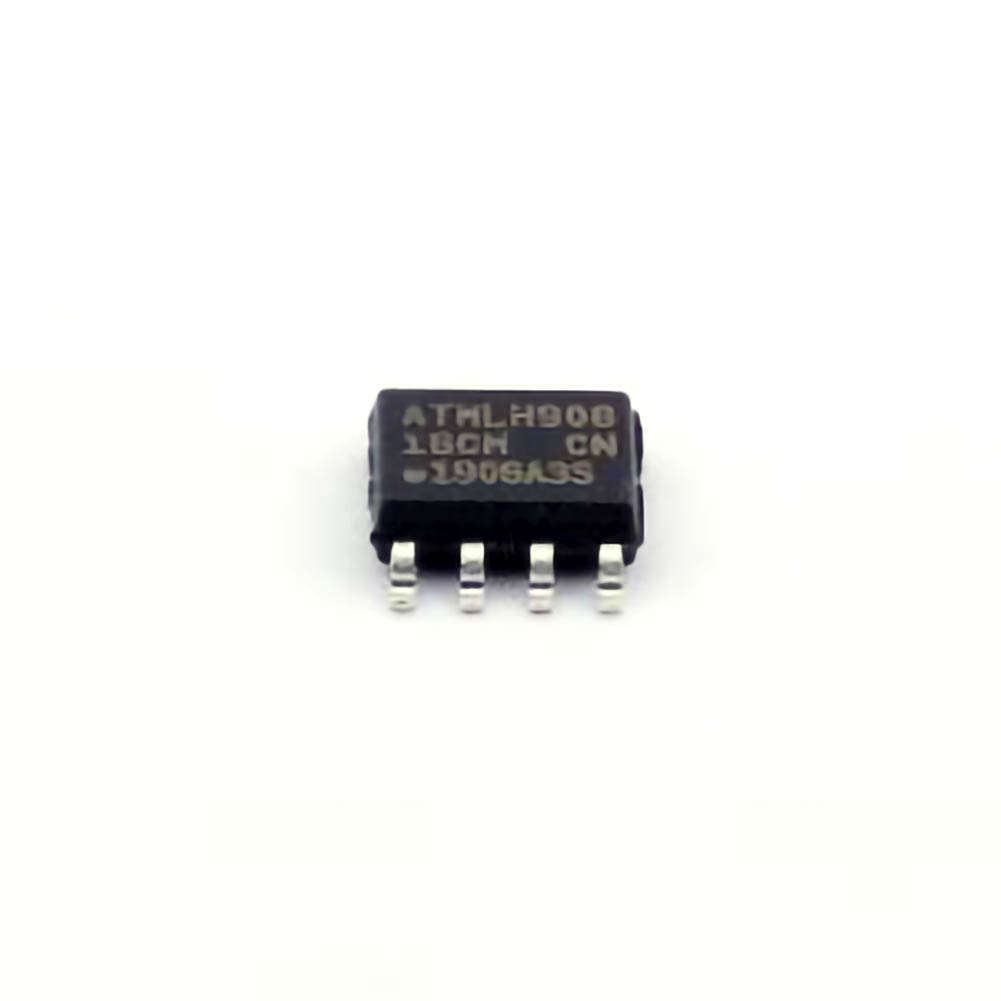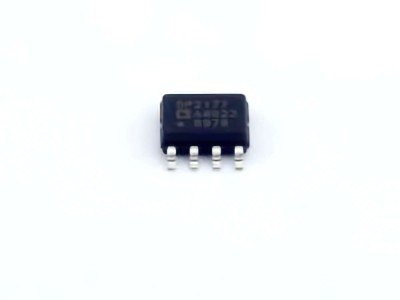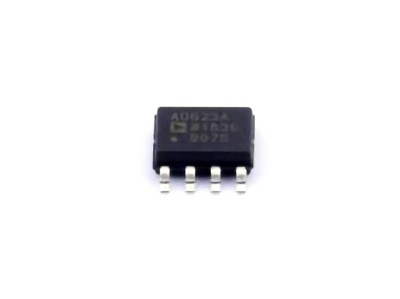
The MICROCHIP AT24C16C-SSHM-T is a widely used 16Kb I2C EEPROM with a broad range of applications, including in consumer electronics, automotive systems, and industrial equipment. Despite its popularity, users often face challenges in getting the most out of this chip. This article provides a detailed guide to troubleshooting common issues with the AT24C16C-SSHM-T and offers practical solutions to ensure smooth and efficient operation.
AT24C16C-SSHM-T, EEPROM, troubleshooting, solutions, I2C Communication , Electrical issues, data corruption, Memory Access , device failure, microcontroller, digital electronics
Understanding the AT24C16C-SSHM-T and Common Issues
The AT24C16C-SSHM-T is an I2C-based EEPROM (Electrically Erasable Programmable Read-Only Memory) that offers 16Kb of data storage. It is widely used due to its affordability, ease of integration, and low Power consumption. However, like any electronic component, the AT24C16C-SSHM-T can encounter problems that may prevent it from working properly. Understanding these issues and how to troubleshoot them is crucial for ensuring the chip functions as expected.
1. I2C Communication Failures
One of the most common issues faced by users of the AT24C16C-SSHM-T is I2C communication failure. The I2C bus protocol is sensitive to several factors, including voltage levels, wiring, and the Timing of read/write operations. Below are some potential causes and solutions for I2C communication failures:
Incorrect Pull-Up Resistors :
The AT24C16C-SSHM-T relies on pull-up resistors on the SDA and SCL lines to ensure proper signal levels. If these resistors are too weak or too strong, the communication can fail. Ensure that the pull-up resistors are correctly sized, typically in the range of 4.7kΩ to 10kΩ depending on the bus speed and the length of the I2C lines.
Incorrect I2C Address:
The AT24C16C-SSHM-T uses a 7-bit I2C address, which is typically 0x50 for the chip. However, some systems use a 8-bit address format, where the address byte is shifted. If the address is incorrectly set, the microcontroller will not be able to communicate with the EEPROM. Double-check the address settings in your code and ensure the device address is set correctly.
Bus Contention:
I2C buses can suffer from contention if multiple devices are attempting to communicate simultaneously. Ensure that each device on the bus has a unique address, and avoid excessive bus loading by limiting the number of connected devices. A bus analyzer can help diagnose this issue.
Timing Issues:
The AT24C16C-SSHM-T operates at certain speeds (typically 100kHz for standard mode and up to 400kHz for fast mode). If the bus speed is set too high or too low, communication may fail. Check the clock speed settings in the microcontroller to ensure they are compatible with the EEPROM.
2. Data Corruption and Write Failures
Another common issue with the AT24C16C-SSHM-T is data corruption or failed writes. This issue is particularly frustrating because it can lead to inconsistent data storage or failure to update memory contents.
Power Supply Issues:
The AT24C16C-SSHM-T requires a stable power supply for proper operation. Voltage dips or fluctuations can lead to unexpected behavior, including failed writes or corrupted data. Ensure the power supply is stable, and use decoupling capacitor s (typically 0.1µF and 10µF) near the EEPROM to filter out noise.
Write Protection:
The AT24C16C-SSHM-T has a hardware-based write protection feature that prevents accidental writes. If the WP (Write Protect) pin is pulled low, it will block write operations to the EEPROM. Ensure that this pin is either tied high (to Vcc) or left floating (depending on your configuration) to enable writing.
Incorrect Write Timing:
When writing data to the AT24C16C-SSHM-T, the chip requires certain timing intervals between commands. If these intervals are too short or too long, the chip may fail to properly execute the write operation. Refer to the datasheet for precise timing specifications and make sure your software implementation adheres to them.
Insufficient Write Time:
The AT24C16C-SSHM-T needs a specific amount of time to write data to memory. This is typically between 5ms and 10ms for a single byte, but for page writes (multiple bytes), the time may increase. If your code doesn’t account for this write cycle time, data may be overwritten or not properly stored. Implement a delay after each write operation to allow the chip to complete the process.
3. Electrical Noise and Interference
I2C communication is susceptible to electrical noise, which can lead to unreliable operation of the AT24C16C-SSHM-T. Noise can corrupt data transmission, leading to communication errors or memory corruption.
Shielding:
To reduce the effects of external electromagnetic interference ( EMI ), consider using shielded cables for I2C communication. Additionally, route the SDA and SCL lines away from high-current traces or noisy components.
Grounding Issues:
Inadequate grounding or a shared ground between the microcontroller and the AT24C16C-SSHM-T can lead to ground loops or fluctuating voltage levels. Ensure the ground connections are properly established and that the chip and microcontroller share a common ground reference.
Decoupling Capacitors :
Use decoupling capacitors close to the EEPROM to filter out power supply noise. A combination of 100nF and 10µF capacitors is often recommended. These capacitors will help maintain stable voltage levels and reduce the risk of data corruption.
4. Incorrect Memory Access
At times, the AT24C16C-SSHM-T might appear to function correctly but fails to provide accurate data on reads or writes. This can be due to issues with accessing the correct memory location or improper handling of memory boundaries.
Out of Bounds Access:
The AT24C16C-SSHM-T provides 16Kb of storage, which is divided into 2048 bytes of memory. Attempting to read or write beyond this range can lead to unexpected results or no data being returned. Always ensure that your software handles memory boundaries correctly by checking the address range before accessing memory.
Page Boundary Issues:
The AT24C16C-SSHM-T supports page writes, but these writes cannot cross page boundaries (each page is typically 64 bytes). If your software attempts to write more than 64 bytes in a single operation, it will lead to issues. Break down large write operations into smaller chunks to ensure that they fit within a single page.
Advanced Troubleshooting and Solutions for the AT24C16C-SSHM-T
While the previous section covered some of the most common issues, there are more advanced troubleshooting techniques and potential issues to consider when working with the AT24C16C-SSHM-T. This part of the article will explore those in detail.
1. Device Reset and Recovery
If the AT24C16C-SSHM-T is unresponsive or behaves erratically, it may need to be reset or recovered. The EEPROM does not have a dedicated reset pin, but you can perform a reset by toggling the power supply.
Power Cycling:
A simple power cycle is often effective in resetting the AT24C16C-SSHM-T. Disconnect and reconnect the power supply to the chip, or use a reset circuit that cuts and restores power. This should clear any issues related to stuck operations or faulty memory states.
I2C Reset Procedure:
In some cases, the I2C bus itself may need to be reset. This can be done by releasing the SDA and SCL lines to their idle states (high) for a short period of time. This action can help resolve issues like stuck clock signals or data corruption due to bus contention.
2. Address Conflicts and Multi-Device Setup
In systems where multiple I2C devices are connected, address conflicts can arise, causing communication failures with the AT24C16C-SSHM-T. Each I2C device must have a unique address, but in some cases, multiple devices may share the same default address (e.g., 0x50 for AT24C16C-SSHM-T).
Address Reconfiguration:
Some EEPROMs, including the AT24C16C-SSHM-T, allow for reconfiguration of the device address using the A0, A1, and A2 pins. These pins can be used to assign a different address to the device, which helps avoid conflicts. Consult the datasheet for more information on how to configure these pins for different address values.
Bus Master Conflicts:
If multiple master devices are controlling the I2C bus, conflicts may arise. Ensure that only one master device is controlling the I2C bus at any time, and implement a bus arbitration mechanism if necessary.
3. Handling EEPROM Wear and Tear
The AT24C16C-SSHM-T is designed for a limited number of write cycles—typically around 1 million write/erase cycles per byte. Over time, as the EEPROM approaches its write endurance limit, it may start to fail. To mitigate this issue:
Wear Leveling:
If your application involves frequent writes, consider implementing wear leveling techniques. This involves spreading the writes across different memory locations to avoid wearing out a single memory location prematurely. By rotating write locations, the EEPROM lifespan can be significantly extended.
Monitor Write Cycles:
Regularly monitor the number of write cycles per memory location. You can implement a simple counter in your software that tracks the number of writes to each memory address. When a location reaches a predefined threshold, switch to another part of memory.
4. Temperature and Environmental Factors
Extreme temperatures or environmental factors can affect the performance of the AT24C16C-SSHM-T. Operating outside the recommended temperature range can lead to erratic behavior or failure to write/erase data correctly.
Operating Temperature Range:
The AT24C16C-SSHM-T operates within a temperature range of -40°C to +85°C. Ensure that the environment in which the chip is used stays within this range to guarantee proper functionality. For applications in harsh environments, consider using temperature-compensating circuits or additional protective measures.
Humidity and Moisture:
Excess moisture or humidity can cause corrosion of the chip’s pins or damage the internal circuitry. If using the EEPROM in an environment prone to moisture, consider using protective coatings or enclosures to shield the device.
5. Optimizing Performance
To ensure that the AT24C16C-SSHM-T operates at its peak performance, it’s essential to optimize both hardware and software configurations.
Optimize I2C Speed:
If you are using the AT24C16C-SSHM-T in a high-speed application, consider increasing the I2C clock frequency. However, keep in mind that high-speed operation may lead to signal degradation over long distances or with multiple devices. Test the system thoroughly to ensure reliability at higher speeds.
Efficient Memory Management :
Organize your memory accesses efficiently, especially when dealing with large data sets. Sequential reads and writes are faster and more reliable than random accesses. Use buffering techniques to batch data and reduce the number of I2C transactions.
By understanding the common troubleshooting issues and implementing these solutions, you can maximize the performance and reliability of your AT24C16C-SSHM-T EEPROM in any application. Always refer to the datasheet for specific details and consult professional forums and communities for additional troubleshooting tips.
Partnering with an electronic components supplier sets your team up for success, ensuring the design, production, and procurement processes are quality and error-free.


